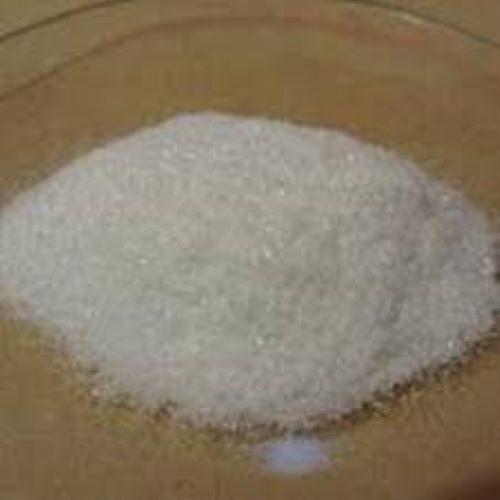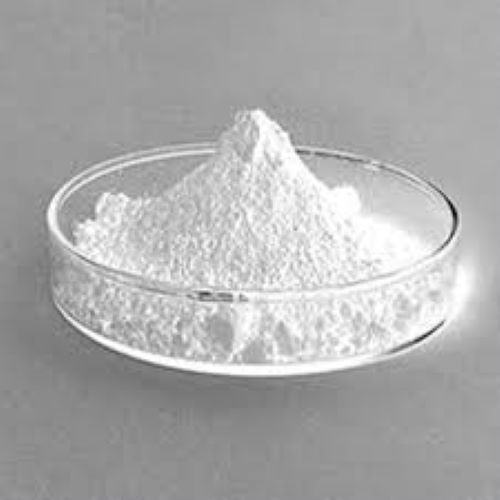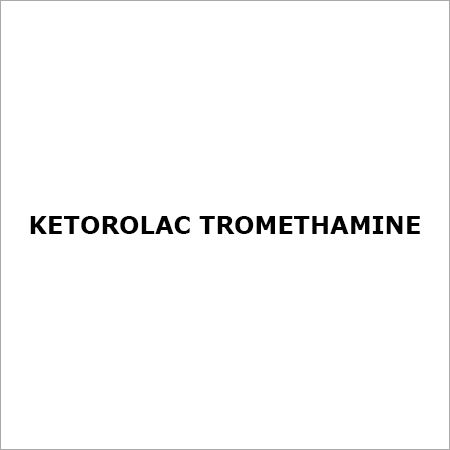Tenoxicam .
Product Details:
- Molecular Formula C13H11N3O4S2
- Solubility Solubility in Water: Very slightly soluble in water. It has limited solubility in aqueous solutions, which is why it is often formulated in sodium salts or micronized for better absorption in pharmaceutical formulations. Solubility in Other Solvents: Soluble in alkaline solutions, such as sodium hydroxide or sodium bicarbonate. Slightly soluble in acetone and ethanol. Practically insoluble in chloroform and ether. Solubility for Injection: When preparing for injection, Tenoxicam is typically reconstituted in an alkaline solution (like sodium hydroxide), which increases its solubility. Formulation Considerations: Due to its low water solubility, Tenoxicam is often formulated in micronized or salt forms to improve its dissolution rate, especially in oral tablets and injectable preparations.
- EINECS No 261-689-2
- Loss on Drying 105 C for 2 hours
- Smell No Smell
- HS Code 2942.00.90
- Melting Point 154 158 C
- Click to View more
Tenoxicam . Price And Quantity
- 25 Kilograms
- 1240.0 INR/Kilograms
Tenoxicam . Product Specifications
- 20 ppm
- 154 158 C
- 4-Hydroxy-2-methyl-N-(pyridin-2-yl)-2H-thieno[2,3-e][1,2]thiazine-3-carboxamide 1,1-dioxide
- 2942.00.90
- 59804-37-4
- Liquid
- Medicine Grade
- No Smell
- Tenoxicam is a non-steroidal anti-inflammatory drug (NSAID) used primarily for its analgesic, anti-inflammatory, and antipyretic properties Rheumatoid Arthritis Reduces joint pain, swelling, and stiffness. Osteoarthritis Helps relieve pain and improve joint mobility. Ankylosing Spondylitis Eases inflammation and stiffness in the spine. Acute Musculoskeletal Pain Used in short-term conditions like sprains, strains, or back pain. Post-operative Pain Sometimes used as an injectable NSAID to control pain after surgery. Gout (Acute Attack) Reduces inflammation during acute episodes. Routes of Administration Oral tablets Intramuscular injection (sterile powder form reconstituted with solvent) Rectal suppositories (less common) Precautions & Side Effects Common: Gastric irritation, nausea, headache, dizziness Serious: GI bleeding, kidney impairment, cardiovascular risks (especially with long-term use) Contraindicated in: Peptic ulcer, severe kidney or liver disease, pregnancy (especially 3rd trimester)
- 105 C for 2 hours
- 261-689-2
- Solubility in Water: Very slightly soluble in water. It has limited solubility in aqueous solutions, which is why it is often formulated in sodium salts or micronized for better absorption in pharmaceutical formulations. Solubility in Other Solvents: Soluble in alkaline solutions, such as sodium hydroxide or sodium bicarbonate. Slightly soluble in acetone and ethanol. Practically insoluble in chloroform and ether. Solubility for Injection: When preparing for injection, Tenoxicam is typically reconstituted in an alkaline solution (like sodium hydroxide), which increases its solubility. Formulation Considerations: Due to its low water solubility, Tenoxicam is often formulated in micronized or salt forms to improve its dissolution rate, especially in oral tablets and injectable preparations.
- C13H11N3O4S2
- < 10 m
- Yellow to yellowish-orange
- Odorless
- 3 Years
- 5.0 to 7.0.
- 337.37 Grams (g)
- Pharmaceutical Intermediates
- Tenoxicam
- 4-Hydroxy-2-methyl-N-(pyridin-2-yl)-2H-thieno[2,3-e][1,2]thiazine-3-carboxamide 1,1-dioxide
- 98%
- Room Temperature
Tenoxicam . Trade Information
- Mumbai
- Cash Advance (CA), Cash in Advance (CID), Letter of Credit at Sight (Sight L/C), Letter of Credit (L/C)
- 100 Kilograms Per Day
- 7 Days
- No
- Free samples are available
- 25kgs
- North America, South America, Eastern Europe, Western Europe, Middle East, Africa, Asia, Australia, Central America
- WE PROVIDES ALL KIND OF CERTIFICATIONS AS YOU REQUIRED
Product Description
We are offering high quality of Tenoxicam Sterile powder. We are known for manufacturing, exporting, distributing, trading and supplying Tenoxicam Sterile powder in in Gujarat, India. Further, this is safely packaged by our professionals in diverse packaging options that maintain its purity and effectiveness.
Shreeji Pharma International is leading Manufacturer, Exporter, Distributor, and Supplier Tenoxicam Sterile powder in Gujarat. India. Shreeji Pharma International manufacturing & gmp; supplying all products under GMP site with all types of regulatory supports.
Shreeji Pharma International is the largest manufacturer, Exporter and supplier of Tenoxicam Sterile powder. Nowadays Shreeji Pharma International is one of the leading manufacturer and exporter, who is manufacturing Tenoxicam Sterile powder as well as Intermediates of Tenoxicam Sterile powder.
Shreeji Pharma International is exporter, supplier, distributor and manufacturers of the Active Pharmaceuticals Ingredients in many countries for many years.
Shreeji Pharma International currently export Tenoxicam Sterile powder to countries like Gulf Countries, South East Asia countries, African Countries, CIS Countries, LATAM countries, Central American Countries and in European countries.
Tenoxicam Sterile Powder is a nonsteroidal anti-inflammatory drug (NSAID) used for its analgesic, anti-inflammatory, and antipyretic effects. It is commonly prescribed for conditions involving pain, inflammation, and fever, such as osteoarthritis, rheumatoid arthritis, gout, and musculoskeletal disorders. In its sterile powder form, tenoxicam is typically administered intramuscularly (IM) or intravenously (IV) in a clinical setting for rapid pain relief.
1. Chemical Name:
5-methyl-2-[(2- pyridyl)thio]methyl] - 3H - 1,2,4 - oxadiazine-3-carboxylic acid
2. Molecular Formula:
C13H14N2O4S
3. Molecular Weight:
290.33 g/mol
4. CAS Number:
519-94-0
5. Description:
Tenoxicam is a long-acting NSAID that inhibits the enzyme cyclooxygenase (COX), which is involved in the production of prostaglandins substances that promote inflammation, pain, and fever. By inhibiting COX, tenoxicam reduces the production of these inflammatory mediators, leading to decreased inflammation and pain.
As a sterile powder, tenoxicam is typically reconstituted with a suitable diluent (such as sterile water or saline) for intramuscular (IM) or intravenous (IV) injection. This form of tenoxicam is usually used in situations where oral administration is not practical or when a rapid onset of action is needed.
6. Physical Appearance:
Form: White or almost white crystalline powder.
Appearance in Solution: After reconstitution, the solution should be clear and free from visible particles.
Odor: Typically odorless.
7. Solubility:
Tenoxicam is moderately soluble in water and freely soluble in organic solvents like dimethyl sulfoxide (DMSO) and ethanol.
8. Mechanism of Action:
Cyclooxygenase Inhibition: Tenoxicam works by selectively inhibiting both COX-1 and COX-2 enzymes, reducing the production of prostaglandins. Prostaglandins play a key role in promoting inflammation, pain, and fever. By inhibiting these enzymes, tenoxicam decreases the overall inflammatory response and alleviates pain.
Anti-inflammatory Effects: Reduces the inflammatory response in conditions like rheumatoid arthritis, osteoarthritis, and gout.
Analgesic Effects: Provides relief from pain associated with various conditions such as musculoskeletal pain and post-operative pain.
9. Therapeutic Uses:
Osteoarthritis: Tenoxicam is used for the relief of pain and inflammation in patients with osteoarthritis.
Rheumatoid Arthritis: It is effective in reducing symptoms of pain, swelling, and stiffness in rheumatoid arthritis.
Acute Gout: Tenoxicam can be used to reduce the pain and inflammation associated with gout attacks.
Musculoskeletal Pain: Effective for managing pain resulting from muscle or bone injury.
Post-operative Pain: Given intravenously, tenoxicam can be used to manage acute pain after surgery.
Fever: As an antipyretic, it can be used to reduce fever associated with various conditions.
10. Dosage:
Adult Dosage:
Initial Dose: For acute pain or inflammation, the typical initial dose is 20 mg, administered via intravenous (IV) or intramuscular (IM) injection.
Maintenance Dose: For ongoing therapy, a dose of 10-20 mg may be administered once a day.
The dosage may vary depending on the clinical condition and the severity of the symptoms.
Administration:
The powder is reconstituted with a suitable diluent and injected either intramuscularly or intravenously.
The IV form is typically infused slowly to avoid irritation or adverse reactions.
IM injections are generally administered into the upper outer quadrant of the gluteus muscle.
11. Side Effects:
Common Side Effects:
Gastrointestinal: Dyspepsia, nausea, abdominal pain, diarrhea, or constipation.
Central Nervous System: Dizziness, headache, or tiredness.
Injection Site Reactions: Pain, redness, or swelling at the injection site.
Skin: Rash, pruritus (itching).
Serious Side Effects:
Gastrointestinal bleeding or ulcers: Risk increases with prolonged use.
Kidney problems: May cause renal impairment, especially in patients with pre-existing kidney disease.
Cardiovascular issues: Fluid retention, hypertension, or worsening of heart failure.
Liver issues: Elevated liver enzymes, jaundice, or hepatitis.
Severe allergic reactions: Anaphylaxis or severe rashes.
Long-Term Use: Prolonged use may lead to gastrointestinal complications, renal dysfunction, and cardiovascular problems. Regular monitoring is recommended for long-term users.
12. Precautions:
Gastrointestinal Risk: Patients with a history of gastric ulcers or GI bleeding should be monitored closely.
Renal and Hepatic Impairment: Use with caution in patients with kidney or liver diseases.
Cardiovascular Issues: Should be used cautiously in patients with hypertension, heart failure, or other cardiovascular disorders.
Allergic Reactions: Patients with a history of asthma, allergic rhinitis, or urticaria should avoid tenoxicam, as it may worsen these conditions.
Pregnancy and Lactation: Tenoxicam is not recommended during pregnancy, especially in the third trimester, due to the potential risks to the fetus (e.g., premature closure of the ductus arteriosus). It should also be avoided during breastfeeding due to the potential for excretion in breast milk.
13. Storage:
Store the sterile powder in a cool, dry place, away from light, at room temperature (1530C or 5986F).
Reconstituted solution should be used immediately or within 24 hours if stored under refrigeration (28C). Do not freeze.
Keep out of reach of children.
14. Regulatory Status:
FDA Approval: Tenoxicam is approved in various countries for the treatment of inflammatory conditions and pain, but it may not be approved in all regions. It is widely used in Europe and Asia but may not be available in the United States.
WHO: Tenoxicam is not listed in the World Health Organization's List of Essential Medicines, though it is commonly used in certain regions for inflammatory pain management.
15. Brand Names:
Tenoxicam (generic name).
Tilcotil (brand name widely available).
Texa (brand name in some countries).

Price:
- 50
- 100
- 200
- 250
- 500
- 1000+











 : nilesh.sheth70
: nilesh.sheth70
